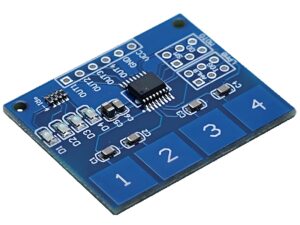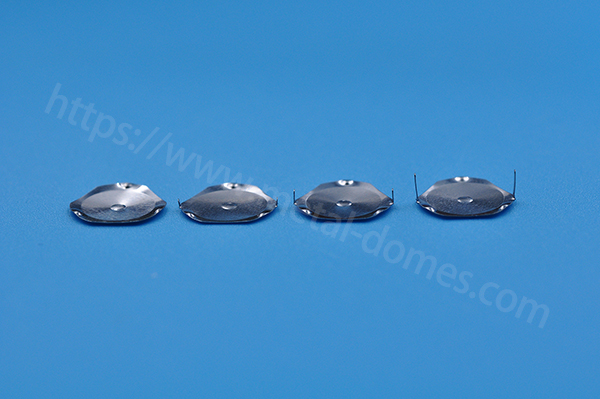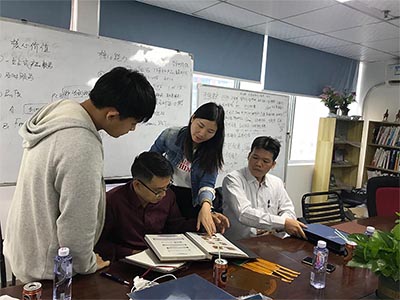The most basic function of a tactile switch is to act as a trigger device. When the user presses the switch, it can respond quickly and change the state of the circuit. Whether it is turning on or off an electronic device or starting a specific function, a tactile switch can accurately execute instructions.
What is a tactile switch?
A tactile switch is a switch that works based on the principle of compression and release of a spring contact piece.
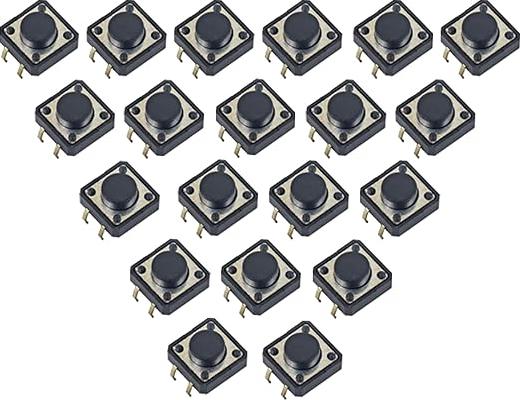
A tactile switch usually consists of a housing, a button, a spring contact piece, and a metal terminal. When the button is pressed, the spring contact piece is compressed and contacts the metal terminal, forming a low-impedance circuit that allows current to pass. After releasing the button, the spring contact piece returns to its original state, the contact separates from the metal terminal, and the circuit is disconnected.
The characteristics of a tactile switch include:
- 1. Simple structure: It consists of a housing, a button, a spring contact piece, and a metal terminal, and the structure is relatively simple.
- 2. Convenient operation: The circuit is opened and closed by pressing a button, which is easy to operate.
- 3. Obvious feedback: The circuit is switched on and off by compressing and releasing the spring contact piece, with obvious tactile feedback.
- 4. Strong durability: Due to the elastic design of the spring contact piece, the tactile switch has a long service life?.
How do tactile buttons work?
The working principle of the tactile button is based on the compression and release of the spring contact piece, and the circuit is switched on and off by the contact and separation of the contact point.
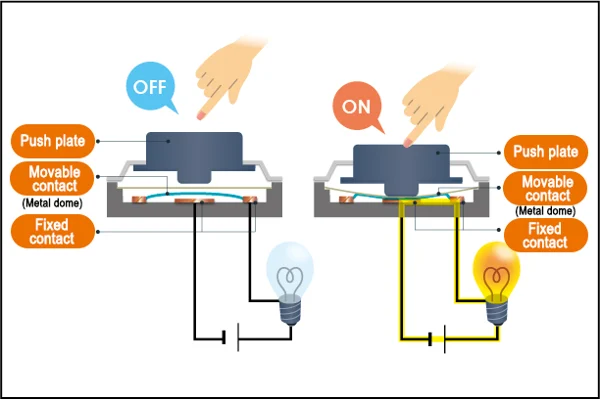
The working principle of the tactile button can be divided into the following steps:
- 1. Compression phase: When the button on the tactile switch is pressed, the button applies force to the spring contact piece, compressing the spring contact piece so that it contacts the metal terminal, thereby closing the circuit.
- 2. Contact phase: In the closed state, a low-impedance circuit is formed between the contact and the metal terminal, allowing current to pass. At this time, the output signal of the tactile switch is activated, which can trigger the corresponding functions of other electronic devices.
- 3. Recovery phase: When the finger leaves the button, the spring contact piece returns to its original state, pushes the button away, and disconnects the circuit.
Features and advantages of tactile buttons include:
- 1. High sensitivity: Tactile buttons are very sensitive to changes in external forces and can respond quickly and switch the state of the circuit.
- 2. Stability: High-quality tactile switches can provide better touch and stable performance, and have a longer service life.
- 3. Wide application: Tactile buttons have been widely used in many fields, such as home appliances, automotive control panels, industrial automation, etc.
Is a tactile switch momentary?
Tactile switches are not momentary switches. There are significant differences in functions and characteristics between tactile switches and momentary switches.
A tactile switch is an electronic switch that senses operation by touch. When the button is pressed, the spring contact piece is compressed and contacts the metal terminal, thereby closing the circuit; when the button is released, the spring contact piece returns to its original state and the circuit is disconnected.
A momentary switch, also known as a tactile switch, is a low-current, momentary-action push button switch that is usually used in situations where a quick response is required. It is different from a tactile switch in that a momentary switch immediately closes the circuit when pressed, and the circuit is disconnected after releasing it, and there is no continuous circuit connection state.
In summary, although both tactile switches and momentary switches belong to the category of electronic switches, they have obvious differences in working principles and application scenarios. Tactile switches open and close the circuit through touch operations, while momentary switches achieve rapid response and disconnection of the circuit through momentary actions.
Do tactile switches stay on?
Tactile switches cannot stay on. The design principle of tactile switches determines that it cannot stay on. When the button on the tactile switch is pressed, the button applies force to the spring contact piece, compressing the spring contact piece so that it contacts the metal terminal, thereby closing the circuit. However, when the finger leaves the button, the spring contact piece returns to its original state and disconnects the circuit.
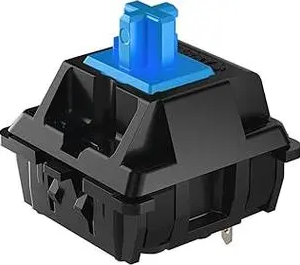
The working principle of the tactile switch is to apply pressure to the spring contact piece through a button or key. The elastic spring contact piece is very sensitive to changes in external forces and can respond quickly and switch the state of the circuit.
When the button or key is pressed, the spring contact piece is compressed and contacts the metal terminal, closing the circuit; when the finger leaves the button, the spring contact piece returns to its original state and disconnects the circuit. This design allows the tactile switch to respond quickly to external operations, but it cannot stay in the open state.
What happens when the tactile switch is pressed?
First, the finger will feel a certain resistance and tactile feedback. Tactile switches are usually designed with a moderate pressing force requirement, and when the pressure is applied to reach the trigger point, the mechanical structure inside the switch will change.
For traditional tactile switches, internal elastic metal sheets or rubber domes and other components will deform under pressure. This deformation will cause the circuit state to change. The originally disconnected circuit contacts may be connected, allowing current to pass through the circuit where the switch is located.
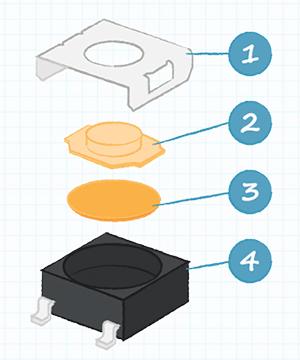
At the same time, a slight “click” sound may be heard, which is the sound produced by the movement of the mechanical structure inside the switch, further providing feedback to the user that the operation is successful.
What’s the difference between tactile and linear switches?
The main difference between tactile switches and linear switches is that they work differently and have different feedback mechanisms. Tactile switches provide clear tactile feedback during the keystroke process, while linear switches need to be fully pressed to work smoothly, without tactile feedback in the middle.
Tactile switches provide a clear tactile feedback during the keystroke process, that is, the key will trigger a signal after being pressed a certain distance, and the user can feel the feedback of the key by hand.
Linear switches need to be fully pressed to work smoothly, without tactile feedback in the middle. This switch is suitable for scenarios that require smooth operation. It provides a damping-free keystroke experience and is suitable for long-term typing and gaming.
Why do tactile switches have four pins?
The reason why tactile switches have four pins is to support more functions and application scenarios. The four pins correspond to the input and output ends respectively, allowing the tactile switch to control two circuits at the same time, increasing the flexibility and functionality of use.
Specifically, the design of four pins allows the tactile switch to play a more flexible role in the circuit. When it is necessary to control the on and off of two LED lights, if a tactile switch with single-pole wiring is used, two switches are required to control the two lights separately. The four-pin tactile switch can control the two LED lights through two input terminals and two output terminals, thereby simplifying the circuit design.
In addition, the internal structure of the four-pin tactile switch usually relies on metal springs to protect the force and realize the connection and disconnection. When the switch is pressed, the contact between the normally closed contact and the normally open contact is disconnected to disconnect the circuit; when the switch is released, the contact is closed again and the circuit is connected.
This design makes the tactile switch similar to the ordinary button switch in working principle, but by increasing the number of pins, the convenience and functionality of use are improved.
What is the function of a tactile switch?
The main function of the tactile switch is to apply pressure to the spring contact piece through a button or key to realize the opening and closing of the circuit. When the finger leaves the button or key, the spring contact piece returns to its original state, disconnects the circuit, and realizes the opening and closing function of the circuit.
The tactile switch has the following specific functions:
- Basic control function: The most basic function of the tactile switch is to control the opening and closing of the circuit through a button or key, which is suitable for the switch control of various electrical equipment.
- Durability: Since the physical structure and material selection of tactile switches have an important impact on their performance and lifespan, tactile switches usually have a long service life and stable performance.
- Widely applied: Tactile switches are widely used in various electronic devices, household appliances and industrial control systems due to their simple and reliable design.
What are the applications of tactile switch?
Tactile switches are an electronic switch that belongs to the category of electronic components. Their operation can be sensed by touch. They have the advantages of small contact resistance, accurate operating force error and diversified specifications.
Specific application scenarios of tactile switches include:
- Automotive industry: Touch switches are used to control door switches, touch control panels, etc.
- Medical industry: Touch switches are used in medical equipment and controllers.
- 3C products: Touch switches are used in touch lamps, induction cookers and wall switches, etc.
- Information appliances: Touch switches are used to improve operating efficiency and user experience.
- Industrial equipment: Touch switches are used for automation control and start buttons.
- White appliances: Touch switches are used for smart home decoration and convenient operation?.
In short, tactile switches have multiple functions and they play an important role in electronic devices. Whether it is the basic trigger function, or the provision of tactile feedback, waterproof and dustproof, miniaturization and lightweight, high reliability, strong customizability, energy saving and environmental protection, etc., they all provide strong support for the performance and user experience of electronic devices.


